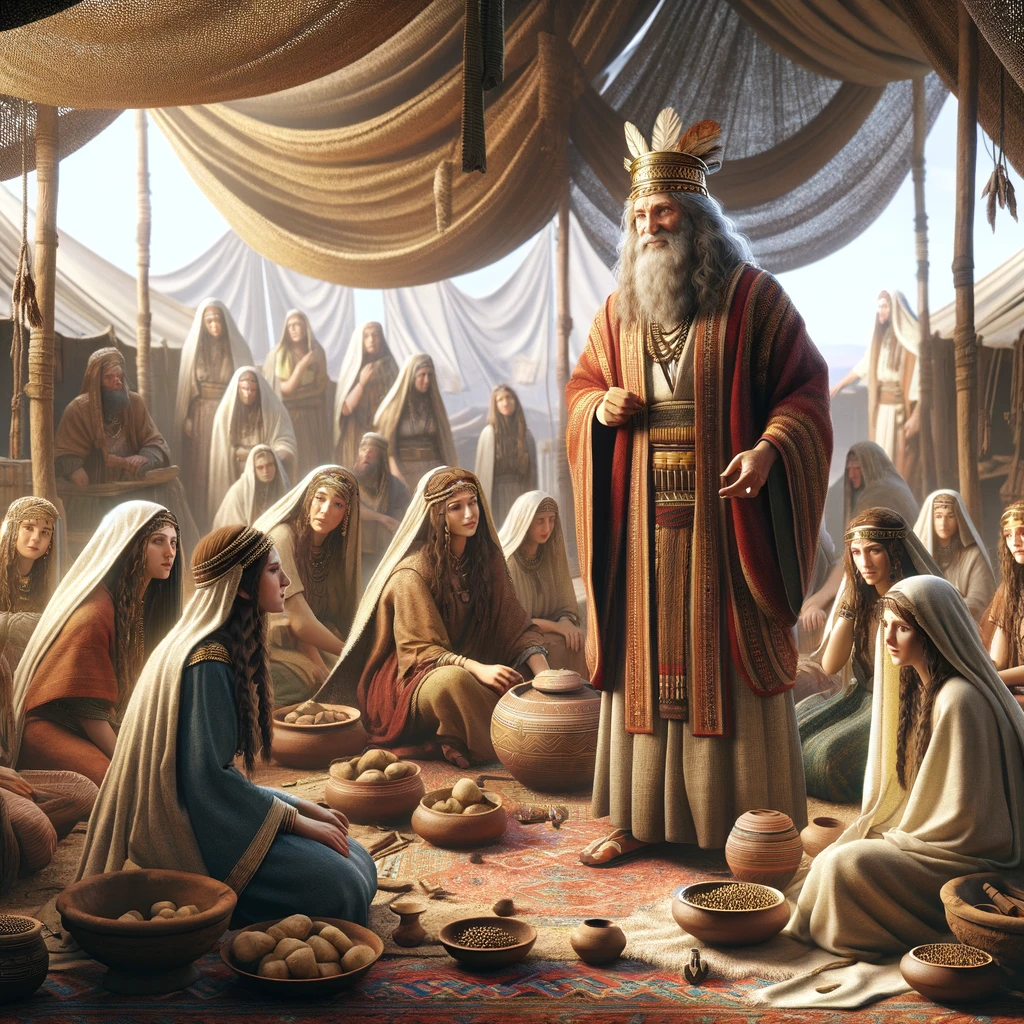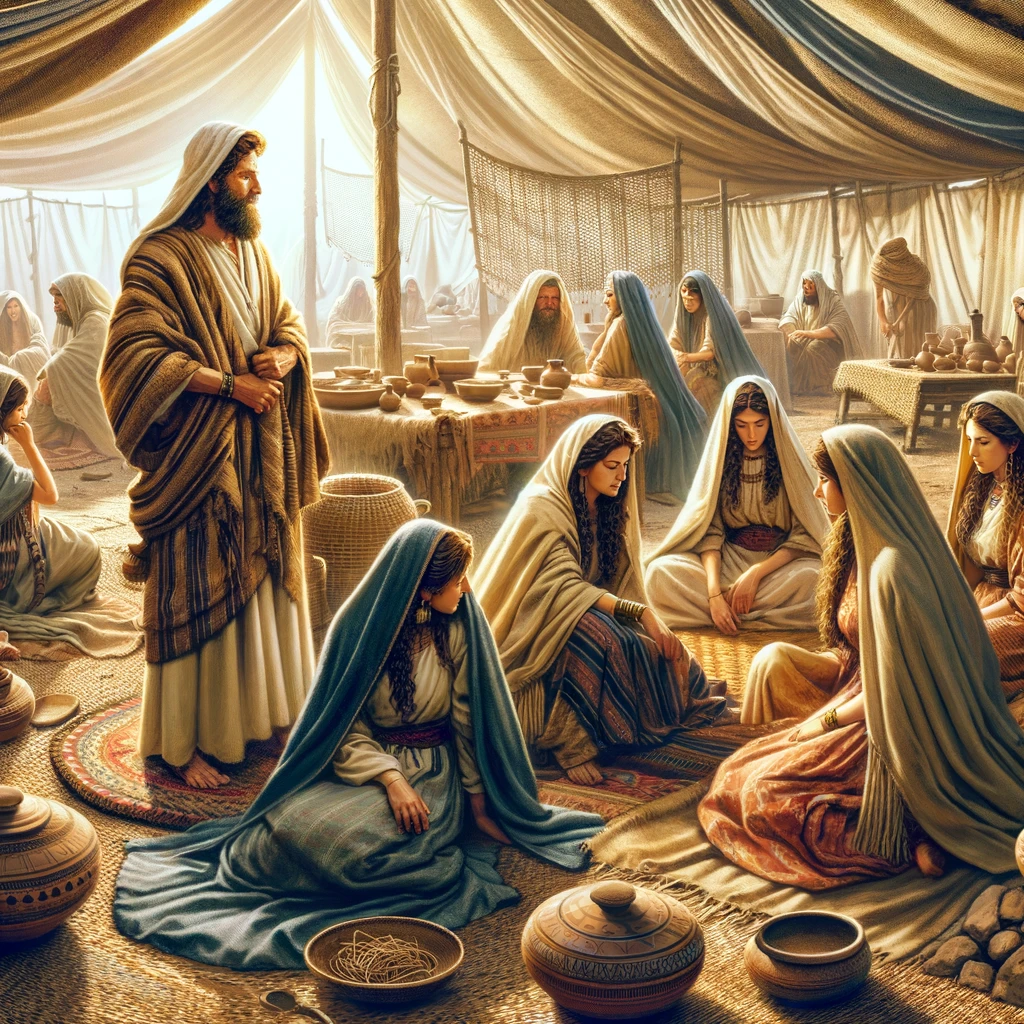Polygamy and concubinage are two practices that were prevalent in ancient societies, including those depicted in the Old Testament of the Bible. This article explores how these practices were viewed and regulated within the context of the Old Testament, offering insights into the historical and cultural backdrop that shaped these views.

Polygamy in the Old Testament: A Closer Look
Polygamy, the practice of having more than one spouse at a time, is a subject that appears with notable frequency in the Old Testament, providing a window into the social, familial, and legal norms of ancient Near Eastern societies. This practice, particularly polygyny (one man having multiple wives), was common among the patriarchs, kings, and other figures in the biblical narratives. This expanded exploration delves into the nuances of polygamy in the Old Testament, examining its implications, regulations, and the theological reflections it prompts.
Societal Context and Implications
Polygamy in the Old Testament era was often tied to social and economic considerations. It was a practice that could enhance alliances between families or tribes, increase labor forces within a household, and ensure progeny for inheritance and legacy purposes. The narratives of Jacob, who married Leah and Rachel, and King David, who had several wives, illustrate how polygamy was woven into the fabric of societal leadership and covenantal promises.
However, the Old Testament also candidly portrays the challenges and conflicts arising from polygamous relationships. The story of Hannah and Peninnah (1 Samuel 1) demonstrates the emotional strife and rivalry that could occur within these family structures. Similarly, the discord between Sarah and Hagar (Genesis 16) highlights the complexities and personal pain that could emerge from polygamous arrangements.
Biblical Regulations and Protections
While the Old Testament does not explicitly prohibit polygamy, it introduces laws and guidelines aimed at mitigating its potential harms and ensuring justice for those within polygamous households. For example, Exodus 21:10-11 mandates that a man must not diminish a wife’s food, clothing, or marital rights if he takes another wife. Deuteronomy 21:15-17 addresses the rights of the firstborn son in polygamous marriages, ensuring he receives a double portion of the inheritance, regardless of his mother’s status.
These regulations reflect a concern for ethical conduct and the protection of vulnerable individuals within the family structure, indicating an awareness of the potential for injustice and conflict inherent in polygamous arrangements.
Theological Reflections and Ethical Considerations
Theologically, the Old Testament’s treatment of polygamy opens up discussions about God’s intentions for human relationships and the ethical standards that govern them. While polygamy is depicted as a part of the cultural context, the Genesis creation narratives (Genesis 2:24) emphasize the ideal of a monogamous union, suggesting a foundational preference for exclusive, committed partnerships.
Prophetic literature and wisdom books, such as Hosea and Proverbs, further develop these themes, using the metaphor of marriage to describe God’s relationship with Israel and highlighting the virtues of fidelity and love. These texts suggest a movement toward understanding God’s ideal for human relationships as based on mutual respect, love, and commitment, transcending the practical and social considerations that drove polygamous practices.
Evolution of Perspectives
The portrayal of polygamy in the Old Testament also reflects the evolving understanding of moral and spiritual ideals over time. As the biblical narrative progresses, there’s a discernible shift towards emphasizing the importance of ethical conduct, justice, and the sanctity of individual relationships. This evolution is part of the broader trajectory of biblical revelation, which culminates in the New Testament’s reaffirmation of monogamous marriage as a symbol of Christ’s relationship with the Church (Ephesians 5:22-33).
Delving Deeper into Concubinage in the Old Testament
Concubinage, a practice wherein a man had a sexual and domestic relationship with a woman without granting her the full status or rights of a wife, is a topic of significant interest and complexity within the Old Testament context. This institution, deeply embedded in the social fabric of ancient Near Eastern societies, offers a window into the gender dynamics, legal structures, and cultural norms of the times. This expanded analysis seeks to provide a more nuanced understanding of concubinage in the Old Testament, its implications, and its portrayal.

The Nature of Concubinage
In the Old Testament, concubinage was a recognized and regulated practice, distinct from marriage and prostitution. Concubines were considered secondary to wives, lacking the full legal and social status of a wife but still maintaining a recognized position within the household. Their primary role often included bearing children, especially in cases where a wife was barren, as seen with Abraham’s concubine, Hagar (Genesis 16).
Legal and Social Status
The legal texts of the Old Testament, such as those found in Exodus, Leviticus, and Deuteronomy, provide insights into the rights and protections afforded to concubines. While these protections were less than those afforded to wives, concubines were not regarded as mere property. For instance, the rights of children born to concubines were acknowledged, albeit with certain limitations compared to children born to wives.
The story of Abraham, Sarah, and Hagar illustrates the complex dynamics of concubinage. Sarah, Abraham’s wife, gives Hagar to Abraham as a concubine to bear a child. The subsequent tensions and conflicts within the household underscore the emotional and social complexities of concubinage (Genesis 16 & 21).
Cultural and Religious Implications
Concubinage in the Old Testament cannot be fully understood without considering its cultural and religious implications. The practice was intertwined with the patriarchal structures and polygamous tendencies of ancient societies. Concubines could be taken from among captives of war, as part of treaties, or from servant classes, reflecting the hierarchical nature of these societies.
Theologically, the narratives involving concubinage in the Old Testament serve multiple purposes. They highlight the human flaws and moral dilemmas faced by biblical figures, offering lessons on faith, responsibility, and the consequences of actions. Additionally, these narratives often lead to the unfolding of God’s covenant and the lineage of Israel, demonstrating how divine purposes can work through complex human situations.
Ethical and Moral Considerations
The depiction of concubinage in the Old Testament has been subject to various interpretations and ethical considerations. While some view it as a reflection of God’s tolerance and accommodation to human societal norms, others see it as indicative of the fallen state of humanity and the need for divine redemption. The emotional and social ramifications of concubinage, as depicted in the narratives, also invite reflections on justice, compassion, and the value of individuals within society.
Exploring Theological and Moral Perspectives on Polygamy and Concubinage in the Old Testament
The Old Testament’s portrayal of polygamy and concubinage provides a rich field for theological and moral exploration. These practices, deeply embedded in the cultural and social fabric of ancient Near Eastern societies, are depicted in biblical narratives in ways that reflect the complexity of human relationships and divine intentions. This deeper dive into the theological and moral perspectives surrounding these practices offers insights into how they were understood within the broader context of Old Testament theology and ethics.
Theological Reflections on Divine Tolerance and Human Frailty
One significant theological perspective is the notion of divine tolerance or accommodation. The Old Testament depicts God as working within the context of human society, guiding and shaping it toward moral and spiritual ideals without completely overturning existing social structures. This gradualist approach can be seen in how God interacts with figures like Abraham, Jacob, David, and Solomon, who were involved in polygamous and concubinary relationships. Despite their flawed actions, these individuals remain central to God’s covenantal promises, suggesting divine patience and a redemptive purpose that works through and beyond human imperfections.
The presence of polygamy and concubinage also highlights themes of human frailty and moral complexity. These narratives often reveal the consequences of actions driven by desire, jealousy, and social ambition, pointing to a deeper need for divine guidance and moral integrity. The stories of Sarah and Hagar, Rachel and Leah, and David’s numerous wives illustrate the interpersonal strife and familial discord that can arise from these practices, serving as cautionary tales about the dangers of deviating from God’s ideal for human relationships.
Moral Perspectives on Justice, Rights, and the Value of Individuals
From a moral standpoint, the Old Testament’s treatment of polygamy and concubinage raises questions about justice, rights, and the intrinsic value of individuals within society. The laws and narratives that address these practices often include provisions aimed at protecting the vulnerable, such as ensuring the rights of the firstborn in a polygamous marriage (Deuteronomy 21:15-17) or the welfare of a concubine and her children (Exodus 21:7-11). These legal protections reflect a concern for equity and the well-being of all members of the community, even within the confines of existing social norms.
The stories of Tamar, Bathsheba, and the Levite’s concubine, among others, serve as poignant reminders of the potential for exploitation and injustice within these relationships. They call attention to the need for societal structures and laws that uphold the dignity and rights of every individual, challenging readers to consider the implications of their actions on the well-being of others.
The Evolution of Moral and Theological Understanding
The Old Testament’s depiction of polygamy and concubinage also speaks to the dynamic nature of moral and theological understanding. Over time, the prophetic and wisdom literature of the Old Testament increasingly emphasizes themes of fidelity, compassion, and ethical conduct, pointing toward a more monogamous ideal in relationships. This evolution reflects a growing awareness of the inherent value of committed, loving relationships as a reflection of God’s covenantal love for humanity.
Moreover, the New Testament further develops these themes, with Jesus and the apostles advocating for the sanctity of marriage between one man and one woman, highlighting the spiritual and moral ideals that would come to define Christian ethics.
Conclusion
The theological and moral perspectives on polygamy and concubinage in the Old Testament reveal a complex interplay between divine purposes, human society, and moral evolution. These narratives and laws invite readers to reflect on the nature of God’s guidance, the importance of justice and compassion in human relationships, and the ongoing development of moral understanding in the light of divine revelation. By engaging with these themes, believers and scholars alike can gain deeper insights into the ethical foundations of the Judeo-Christian tradition and the enduring relevance of its teachings on love, justice, and community.